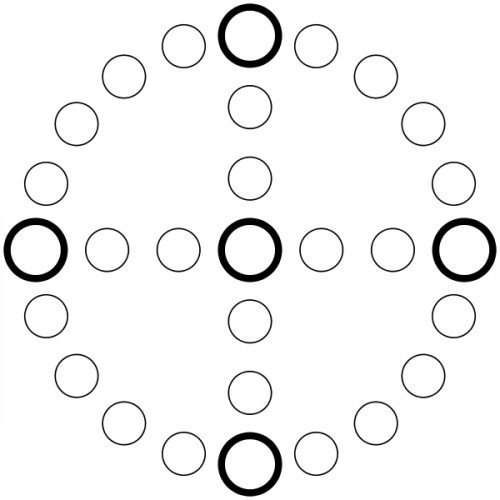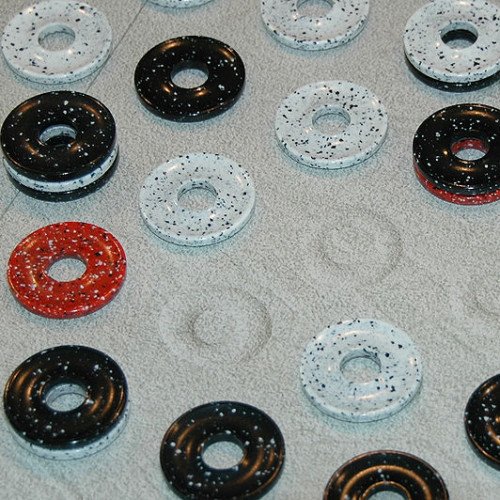CROSS AND CIRCLE GAME VS DVONN

CROSS AND CIRCLE GAME
Cross and circle is a board game design used for race games played throughout the world. The basic design comprises a circle divided into four equal portions by a cross inscribed inside it like four spokes in a wheel; the classic example of this design is Yut. However, the term "cross and circle game" is also applied to boards that replace the circle with a square, and cruciform boards that collapse the circle onto the cross; all three types are topologically equivalent. Ludo and Parcheesi (both descendants of Pachisi) are examples of frequently played cruciform games. The category may also be expanded to include circular or square boards without a cross which are nevertheless quartered (Zohn Ahl), and boards that have more than four spokes (Aggravation, Trivial Pursuit). The game board for the Aztec game Patolli consists of a collapsed circle without an interior cross and thus has the distinction of being a cross that is a circle (topologically), without being a cross plus circle. Tokens are moved around spaces drawn on the circle and on the cross, with the goal of being the first player to move all tokens all the way around the board. Generally the circle of the cross and circle forms the primary circuit followed by the players' pieces. The function of the cross is more variable; for example, in Yut the cross forms shortcuts to the finish, whereas in Pachisi the four spokes are used as player-specific exits and entrances to the pieces' home. In non-race games (like Coppit and Trivial Pursuit) all paths may be undifferentiated in function.
Statistics for this Xoptio

DVONN
DVONN is a two-player strategy board game in which the objective is to accumulate pieces in stacks. It was released in 2001 by Kris Burm as the fourth game of the GIPF Project. DVONN won the 2002 International Gamers Award and the Games magazine Game of the Year Award in 2003. DVONN is played on a board with 49 spaces. The board has a hexagonal layout 5 hexes wide. One player has 23 black pieces to play, the other player has 23 white pieces. There are also 3 neutral red pieces, called DVONN pieces. The object of the game is to control more pieces than your opponent at the end of the game. The game starts with an empty board and proceeds in two phases. During the first phase, the players place their pieces on the board, starting with the three red DVONN pieces. Pieces can be placed on any unoccupied space. White starts, and the players alternate. So Black is the first to place a piece of his own color. The first phase ends when all pieces are placed on the board, filling it completely. The second phase involves the building of stacks of pieces (a single piece is also considered a stack) by moving stacks onto other stacks. A stack is controlled by a player if his color is on top. A stack is immobile if it is surrounded by 6 neighboring stacks. The white player has the first move in this phase. Any mobile stack of height n (with n > 0) can be moved (in a straight line) in any one of the 6 directions by exactly n spaces by the player controlling it, if it lands on another stack. Jumping over empty spaces is allowed, as long as the tower does not land on an empty space. Single DVONN pieces cannot be moved, but they can be once they are part of a stack. After each move, all stacks that are not connected via a chain of neighboring stacks to any stack containing a DVONN piece are removed from the board.